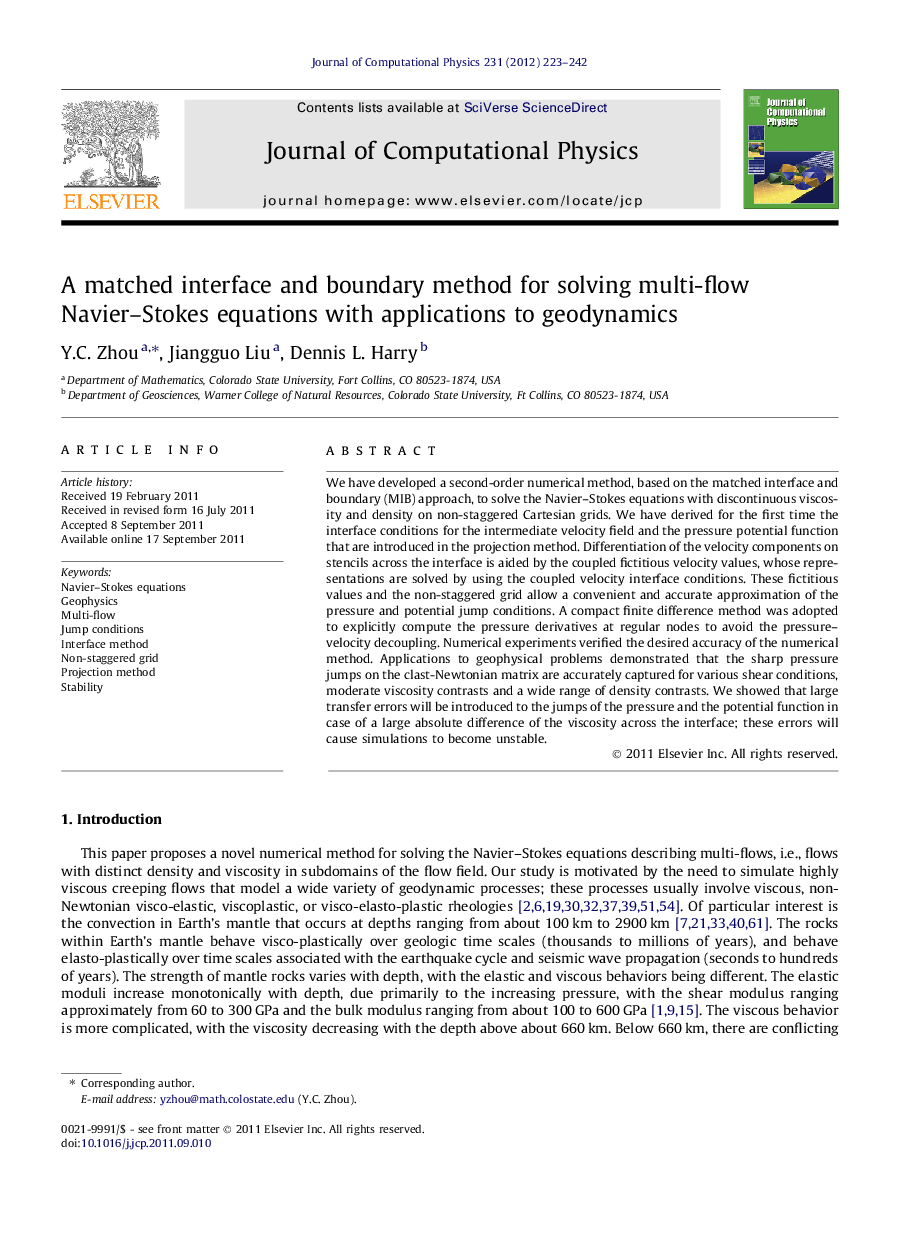| Article ID | Journal | Published Year | Pages | File Type |
|---|---|---|---|---|
| 519230 | Journal of Computational Physics | 2012 | 20 Pages |
We have developed a second-order numerical method, based on the matched interface and boundary (MIB) approach, to solve the Navier–Stokes equations with discontinuous viscosity and density on non-staggered Cartesian grids. We have derived for the first time the interface conditions for the intermediate velocity field and the pressure potential function that are introduced in the projection method. Differentiation of the velocity components on stencils across the interface is aided by the coupled fictitious velocity values, whose representations are solved by using the coupled velocity interface conditions. These fictitious values and the non-staggered grid allow a convenient and accurate approximation of the pressure and potential jump conditions. A compact finite difference method was adopted to explicitly compute the pressure derivatives at regular nodes to avoid the pressure–velocity decoupling. Numerical experiments verified the desired accuracy of the numerical method. Applications to geophysical problems demonstrated that the sharp pressure jumps on the clast-Newtonian matrix are accurately captured for various shear conditions, moderate viscosity contrasts and a wide range of density contrasts. We showed that large transfer errors will be introduced to the jumps of the pressure and the potential function in case of a large absolute difference of the viscosity across the interface; these errors will cause simulations to become unstable.
